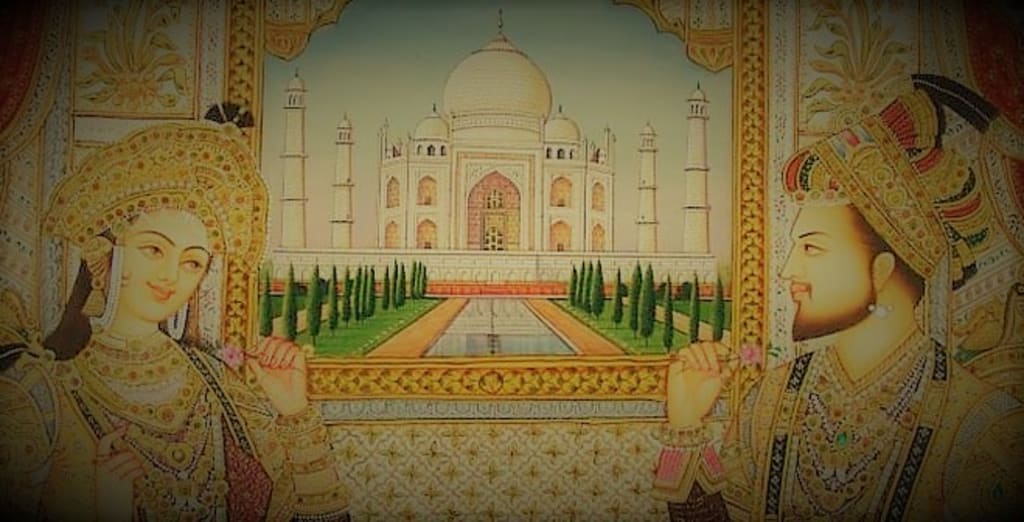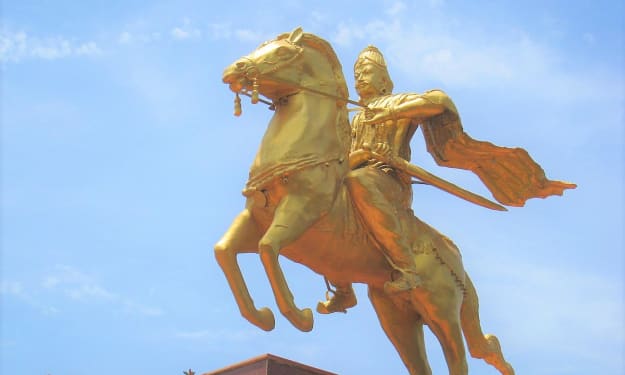Love story of Shah Jahan and Mumtaz Mahal
Love for Life

Shah Jahan Birth:
Shah Jahan, also known as Shahab-ud-din Muhammad Khurram, was born on January 5, 1592, in Lahore, which is now in modern-day Pakistan. He was the fifth Mughal Emperor of India and ruled from 1628 to 1658. His father was the Mughal Emperor Jahangir, and his mother was a Rajput princess named Manmati. Shah Jahan was the third son of Jahangir and was favored by his father over his older brothers. He received a high-quality education and was trained in warfare and statesmanship. After his father's death in 1627, Shah Jahan succeeded him as emperor and embarked on a period of great cultural and architectural achievements, including the construction of the Taj Mahal.
Mumtaz Mahal:
Mumtaz Mahal was born on April 27, 1593, in Agra, India. She was born as Arjumand Banu Begum, the daughter of a nobleman named Asaf Khan. She was later given the name Mumtaz Mahal, which means "the chosen one of the palace." Mumtaz Mahal became the chief wife of Shah Jahan in 1612, and they had a close and loving relationship. Mumtaz Mahal accompanied Shah Jahan on his military campaigns, and she also served as his trusted advisor on political matters. Tragically, Mumtaz Mahal died in 1631 while giving birth to their 14th child. In her memory, Shah Jahan commissioned the construction of the Taj Mahal, one of the most famous and beautiful buildings in the world. The Taj Mahal is considered a monument to love and is often described as the greatest architectural achievement of the Mughal Empire.
Achievements of Shah Jahan:
Shah Jahan, the fifth Mughal emperor of India, is remembered for his many achievements, including:
1. Architecture: Shah Jahan was a great patron of architecture and is credited with commissioning some of the most beautiful buildings in India, including the Taj Mahal, the Red Fort in Delhi, and the Jama Masjid in Delhi.
2. Art: Shah Jahan was also a great patron of the arts, and during his reign, the Mughal court became known for its patronage of painting, music, and poetry.
3. Administration: Shah Jahan is also remembered for his administrative reforms, including the introduction of a centralized system of revenue collection and the establishment of a standing army.
4. Foreign Relations: During his reign, Shah Jahan maintained good relations with other major powers in the region, including the Safavid Empire of Persia and the Ottoman Empire.
5. Economic growth: Under Shah Jahan's reign, India experienced a period of economic growth, as trade and commerce flourished and new industries such as textiles and shipbuilding emerged.
6. Expansion of the Empire: Shah Jahan also continued the expansion of the Mughal Empire, conquering new territories and consolidating Mughal control over much of India.
Overall, Shah Jahan's reign is remembered as a period of great cultural and architectural achievement, as well as economic growth and political stability. His reign was a high point of the Mughal Empire and helped to establish India as a major regional power.
Shah Jahan and Mumtaz Love :
Shah Jahan and Mumtaz Mahal's love story is one of the most famous and romantic tales in history. Shah Jahan was 14 years old when he first met Mumtaz Mahal, who was then known as Arjumand Banu Begum. He was immediately smitten by her beauty, and they were married five years later, in 1612. Mumtaz Mahal was Shah Jahan's favorite wife, and they had a close and loving relationship.
Mumtaz Mahal was a constant companion to Shah Jahan, and she often accompanied him on his military campaigns. She was also his trusted advisor on political matters and was known for her intelligence and wisdom. Tragically, Mumtaz Mahal died in 1631 while giving birth to their 14th child.
Shah Jahan was devastated by the loss of his beloved wife, and he reportedly went into a period of deep mourning. He ordered the court to observe two years of mourning, during which time no celebrations or music were allowed. After the mourning period was over, Shah Jahan commissioned the construction of the Taj Mahal, which he intended to be a monument to his love for Mumtaz Mahal.
The construction of the Taj Mahal took 22 years to complete and involved thousands of artisans and workers. The Taj Mahal is considered one of the most beautiful and romantic buildings in the world and is often described as a symbol of love. It is said that Shah Jahan wanted the Taj Mahal to be a "tear on the face of eternity" and a lasting tribute to his love for Mumtaz Mahal.
About the Creator
manjusathish
My name is Manju, I am completed Bachelor of Electronics and Communication Engineering, My native is Tenkasi in Tamilnadu. I have one and only elder brother. My father is a farmer. My mother is a beedi worker. Thank you.





Comments
There are no comments for this story
Be the first to respond and start the conversation.